Picus Breach and Attack Simulation
Simulate attacks to measure and optimize the performance of your security controls.
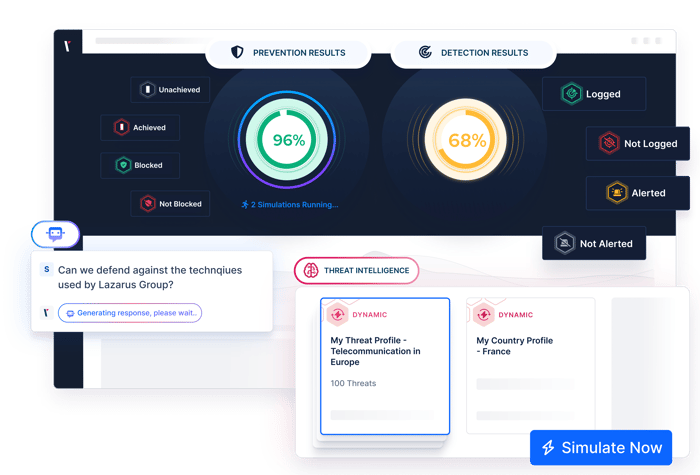
What is Breach and Attack Simulation?
Security controls are fundamental to every organization’s defense against cyber threats. However, security teams often lack assurance that the tools they rely on daily work as they need them to. To fully understand its role in cybersecurity, it's essential to ask the question, 'What is Breach and Attack Simulation?' Simply put, it is a method used to emulate real-world cyberattacks to assess and improve the effectiveness of an organization’s security controls.
Breach and Attack Simulation (BAS) is the automated simulation of cyber attacks to validate that controls such as firewalls, SIEMs, and EDR tools are working and performing optimally.
Reasons to Validate Your Controls:
- Configure settings to your environment
- Improve efficacy over time
- Reduce the risk of IT drift
PICUS ATTACK MODULES & VECTORS
Security Control Validation
Picus Breach and Attack Simulation validates security controls and strengthens defenses by stress-testing your implemented solutions to identify gaps that adversaries could exploit. The platform not only uncovers vulnerabilities across a variety of security measures but also provides both vendor-specific and neutral mitigation suggestions that are ready to implement. This eliminates the need for manual research and rule validation, saving time and effort.
Emerging Threats Testing
24-Hour SLA for Threats with Proof-of-Concept Exploitation, CISA Alerts, Active Threat Actor and APT Group Campaigns, and Ongoing Malware Campaigns.
Network Security Testing
Realistic Network Traffic for APT Groups, Ransomware Download Threats, Malware Loaders, Infostealers, Remote Access Tools (RATs), Trojans, Backdoors, and more.
Endpoint Security Testing
Ransomware & Malware Campaigns, Full Attack Killchain Coverage, APT & Threat Group Campaigns, Linux, macOS, and Windows Threats, DLL Side-Loading Attacks, Rootkits, Testing EDR, XDR, IDS, and AV Solutions.
Email
Gateway
Security
Malicious Links, Malicious Attachments, Executable Malicious Code, Rootkits, Cryptominer Threats, Botnets, Malware Droppers, and Loaders.
Data Loss Prevention (DLP) Testing
File Formats (e.g., PDF, XLS(X), DOC(X), and more), Country-Specific, PII, PCI, Critical OS Data, Source Code Exfiltration, and more.
URL
Filtering
Testing
Outbound HTTP Requests to Malicious URLs, Social Media URL Filtering, Dating & Travel Site URL Filtering, Malicious Command-and-Control, Malware, and Ransomware Site URL Testing.
Web App Firewall Security
OWASP Top 10 Attacks, XSS Evasion Attacks, XXE, SQL & PostgreSQL Injections, Command Injection, File Inclusion, Path Traversal, SSRF, CMS Attacks, HTTP Server Smuggling, Webshells, WAF Vendor Vulnerability Exploitation.
Micro Emulation Plans
Launch a ready-to-run micro-emulation plan for any MITRE ATT&CK technique you select.
Detection Analytics
Analyzes SIEM and EDR logs to identify gaps between expected and available events, pinpointing undetected, unlogged, and non-alerted attacks in real time.
Benefits of BAS for Security Control Validation
Gain Confidence in Your Security Controls
Only 22% of organizations are highly confident that their security controls work as they are supposed to.


Why Security Controls Require Validation
Ever-evolving attacks and daily changes across IT environments mean that the configuration of security controls needs to be constantly reviewed and updated. Firewalls, SIEM, and EDR solutions are not ready to work out of the box and must be tuned regularly to perform effectively.
With security control validation, consistently identify policy gaps that impact the effectiveness of your controls and get action mitigations to reduce the time and effort it takes to optimize them.
Automated Validation Is Essential
While occasional penetration testing and red teaming assessments may provide some insights to help you test the effectiveness of your security controls, the pace of new threats means that a more proactive approach is needed.
Powered by Breach and Attack Simulation, the Picus Security Validation Platform simulates attacks automatically and consistently. Measure security control effectiveness at any moment and benefit from actionable insights to optimize your prevention and detection capabilities.
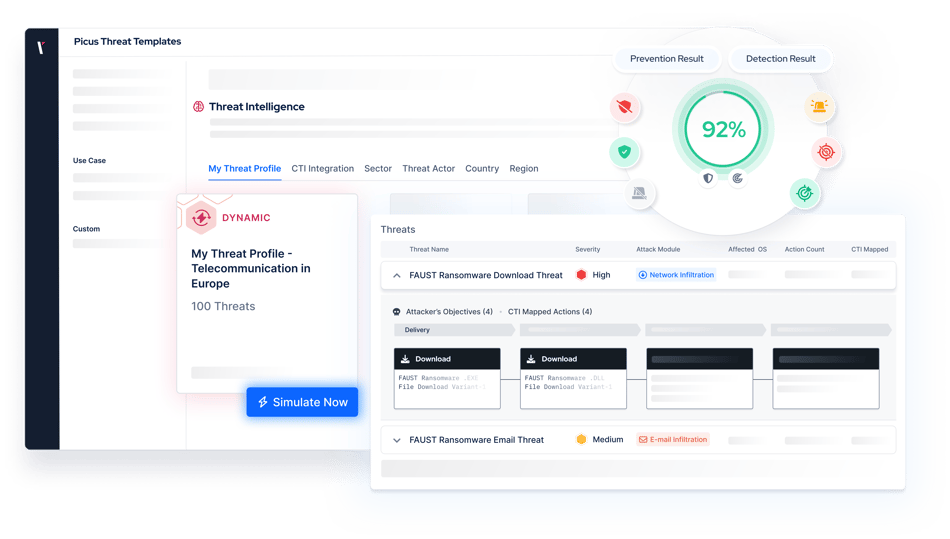
How Picus Helps
Ensure that your controls remain effective with Breach and Attack Simulation.
By simulating thousands of threats and attack techniques, Picus provides assurance that your prevention and detection controls are working as you need them to.
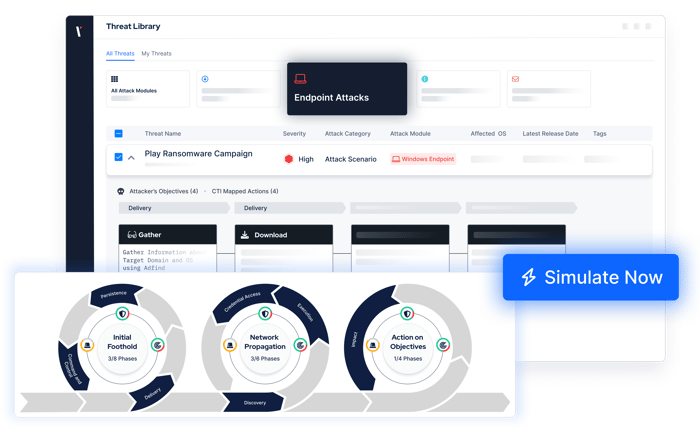
Explore Other Use Cases
How the Picus Platform helps you address your cybersecurity challenges.
Automated Penetration
Testing
Stay on top of exposures while alleviating manual testing requirements.
Adversarial Exposure
Validation
Improve decision making with a holistic view of your security posture.
Resources
Discover Our Latest News and Content





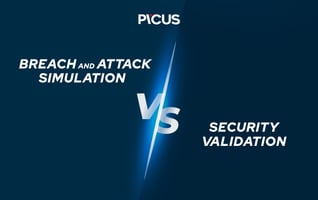
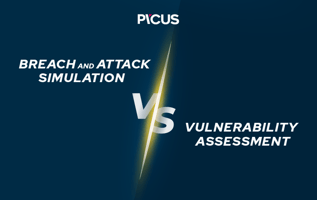


.png?width=3200&height=323&name=Pattern(1).png)
See the
Picus Security Validation Platform
Request a Demo
Submit a request and we'll share answers to your top security validation and exposure management questions.
Get Threat-ready
Simulate real-world cyber threats in minutes and see a holistic view of your security effectiveness.
Frequently Asked Questions
Breach and Attack Simulation and penetration testing are both approaches to security validation.
Penetration testing, which is most commonly performed by human ethical hackers, is focused on discovering and exploiting vulnerabilities in systems, networks and applications. BAS, on the other hand, is fully automated and used to simulate specific threats such as ransomware and test the effectiveness of security controls against them.
Picus Security’s approach to attack simulation means that simulating threats is practically risk-free.
Typically, simulations rely on agents deployed on specific endpoints in your environment. They allow for a wide range of attack techniques to be simulated. The attack simulations are completely safe and do not target and alter production systems.
Security control validation describes the process of testing and optimizing cyber security controls. With security control validation, security teams can measure the effectiveness of prevention and detection controls and understand if they provide coverage against the latest cyber threats. Proactive identification of threat coverage and visibility gaps enables security teams to address exposures before attackers can exploit them.
Ever-evolving attack techniques and constant changes in IT environments mean security control validation is essential to quantify cyber risk and optimize threat readiness. Only by validating controls consistently can security teams keep pace with the latest threats and discover gaps before attackers do.
In order to keep pace with the evolving threat landscape and changes in IT, security control validation should be performed regularly. At a minimum, validation should be performed weekly as well as in response to new emerging threats and configuration changes to prevention and detection security controls.
Traditional security assessments such as vulnerability scanning and penetration testing are focused on the discovery of vulnerabilities and misconfigurations in networks, systems and applications. The purpose of security control validation assessments is not to Identify vulnerabilities but instead validate the effectiveness of security controls to prevent and detect cyber attacks.
To comply with the latest information and data security regulations and standards, organizations must proactively test the effectiveness of security controls and processes. In Europe, The General Data Protection Regulation (GDPR) states that organizations should have a process for regularly testing, assessing and evaluating the effectiveness of technical and organizational measures. ISO-27001, the PCI DSS, and frameworks such as NIST 800-53 also have similar requirements.
To reduce cyber risk, security teams should validate as many network and endpoint security controls as possible. Many organizations start by validating the ability of prevention controls such as firewalls, intrusion prevention systems, and antivirus to block network infiltration and email threats. Validation of EDR and SIEM provides additional assurance by assessing detection capabilities, such as whether detection rules reliably generate alerts when specific adversary behaviors are identified.
